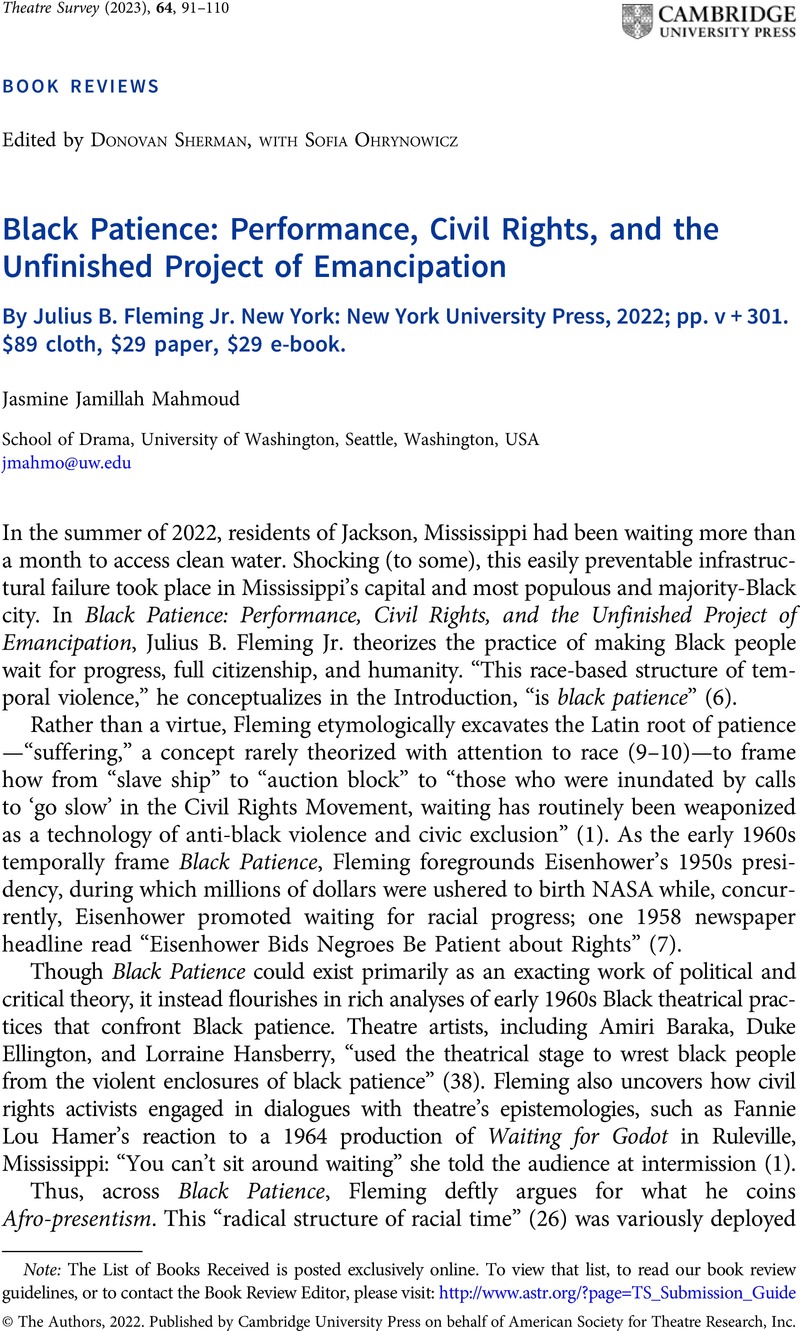No CrossRef data available.
Published online by Cambridge University Press: 20 December 2022

Note: The List of Books Received is posted exclusively online. To view that list, to read our book review guidelines, or to contact the Book Review Editor, please visit: http://www.astr.org/?page=TS_Submission_Guide